
Acta Brasiliensis
Scope & Guideline
Empowering Research in Brazilian Studies for a Global Audience
Introduction
Aims and Scopes
- Biodiversity Studies:
Research on the diversity of species, including flora, fauna, and microorganisms, often focusing on endemic species and their ecological interactions. - Ecological Research:
Investigations into ecological dynamics, habitat interactions, and the impact of anthropogenic changes on ecosystems, particularly in Brazilian biomes. - Conservation Biology:
Studies aimed at understanding conservation strategies, species at risk, and the effects of climate change and habitat destruction on biodiversity. - Pharmacological and Biochemical Analyses:
Research exploring the biochemical properties of plants and animals, including studies on medicinal properties and the potential for pharmaceutical applications. - Environmental Impact Assessments:
Evaluations of the ecological ramifications of human activities, particularly in urban and agricultural contexts, aiming to inform sustainable practices. - Invasive Species Research:
Studies focused on the introduction and impact of non-native species in Brazilian ecosystems, assessing their ecological consequences and management strategies. - Microbial Ecology:
Research on microbial communities in various environments, exploring their roles in nutrient cycling, biodegradation, and ecosystem functioning.
Trending and Emerging
- Antioxidant and Pharmacological Evaluations:
There is an increasing focus on the antioxidant properties of natural compounds and their potential health benefits, indicative of a growing interest in phytochemistry and natural products. - Climate Change Impacts on Biodiversity:
Research examining the effects of climate change on species distribution and ecosystem dynamics is on the rise, emphasizing the urgency of addressing environmental change. - Microbial Biodegradation and Environmental Remediation:
Publications exploring the use of microbes for bioremediation and waste management are gaining momentum, reflecting an increasing interest in sustainable environmental practices. - Invasive Species Management:
Emerging studies on the management and ecological impact of invasive species indicate a growing recognition of their threats to local biodiversity. - Ecological Niche Modeling:
The application of ecological niche modeling techniques to understand species distributions and habitat suitability is becoming more prevalent, showcasing advancements in ecological research methodologies.
Declining or Waning
- Urban Ecology:
Research in urban ecology has seen a decrease, potentially due to a shift towards more pressing environmental issues related to biodiversity and conservation in natural habitats. - Traditional Agricultural Practices:
Studies focused on traditional agricultural methods have waned, possibly as attention shifts towards sustainable and modern agricultural practices that prioritize environmental impacts. - Historical Biogeography:
Investigations into historical patterns of species distribution are less frequently published, suggesting a potential transition towards more contemporary ecological and conservation studies. - Chemical Ecology of Insects:
Research specifically addressing the chemical interactions of insect species has declined, perhaps reflecting a broader focus on ecological interactions and conservation. - Mycology Studies:
While still relevant, research specifically focused on fungal species and their ecological roles appears to be receiving less attention compared to other biological areas.
Similar Journals
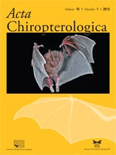
ACTA CHIROPTEROLOGICA
Illuminating the World of BatsACTA CHIROPTEROLOGICA is a prominent international journal dedicated to the field of bat research, published by the Museum & Institute of Zoology PAS-Polish Academy of Sciences. With its commitment to scholarly excellence, this journal serves as a vital platform for scientists, researchers, and students exploring various aspects of chiropterology, including ecology, behavior, conservation, and taxonomy of bats. The journal has been consistently recognized for its high-quality contributions, holding a commendable Q2 status in the categories of Animal Science and Zoology as of 2023, and ranking #191 out of 490 in Agricultural and Biological Sciences according to Scopus, placing it in the 61st percentile. Although ACTA CHIROPTEROLOGICA does not operate under an open access model, its rigorous peer-review process and focus on innovative research provide invaluable insights and advancements in the understanding of bat biology and conservation. This journal not only bridges the gap between theoretical knowledge and practical applications but also highlights the importance of protecting these key species within our ecosystems. With a history spanning over two decades, from its inception in 1999 to ongoing contributions anticipated through to 2024, ACTA CHIROPTEROLOGICA continues to be an essential reference for anyone invested in the vibrant field of chiropterological research.
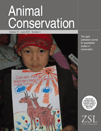
ANIMAL CONSERVATION
Innovating Conservation Strategies for Wildlife and Habitats.Animal Conservation is a prestigious journal that serves as a vital platform for the dissemination of research dedicated to the preservation of wildlife and habitats. Published by Wiley, this journal has established a significant presence in the fields of Ecology and Nature and Landscape Conservation, holding a distinguished Q1 category ranking for both in 2023. With an impressive Scopus rank of #25 in the realm of environmental science, it caters to a global audience keen on understanding and addressing pressing conservation issues. The journal provides researchers, professionals, and students with high-quality, peer-reviewed articles that explore innovative methods and strategies in animal conservation. With its continuous publication since 1998, encompassing a comprehensive range of topics, Animal Conservation is indispensable for anyone aiming to make impactful contributions to the field of ecology and conservation biology.

Ecological Solutions and Evidence
Exploring interdisciplinary approaches to sustainability.Ecological Solutions and Evidence, published by WILEY, stands as a leading platform in the field of ecology, environmental science, and sustainability, with a commendable reputation starting from its inception in 2020. Operating under rigorous academic standards, this journal has achieved notable distinctions by securing a Q1 category ranking in Ecology, Management, Monitoring, Policy and Law, and Nature and Landscape Conservation, making it an invaluable resource for researchers seeking to address pressing environmental challenges. With a current impact factor reflective of its influential articles, the journal features an international scope, focusing on innovative solutions derived from empirical evidence. Accessible to a global audience, the journal encourages open discourse in the field, further supporting researchers, professionals, and students striving to foster ecological sustainability and informed policy-making. Published in the United Kingdom, it aims to bridge the gap between science and application in real-world contexts, promoting actionable insights and interdisciplinary collaboration.

Czech Polar Reports
Fostering Dialogue on Environmental ChallengesCzech Polar Reports, published by Masaryk University Press, is a pivotal academic journal dedicated to advancing research in the realms of Agricultural and Biological Sciences, Earth and Planetary Sciences, and Environmental Science. Since its inception in 2014, this peer-reviewed journal has established a solid reputation as a medium for disseminating innovative research, particularly in the unique environmental contexts of polar regions. With an impressive Q3 ranking in its designated categories by 2023, Czech Polar Reports serves as a valuable resource for researchers, professionals, and students seeking to deepen their understanding of ecological and climatic changes in these critical areas. While the journal is not fully Open Access, it aims to contribute substantially to ongoing scholarly dialogues and provide insights that are essential for sustainability and climate action. The journal's commitment to fostering interdisciplinary research underscores its importance in a rapidly evolving scientific landscape.
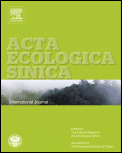
Acta Ecologica Sinica
Empowering scholars to shape the future of ecological science.Acta Ecologica Sinica, published by Elsevier, is a prominent journal in the field of ecology, with a strong focus on fostering understanding in ecological principles and their applications. Established in China, this journal holds an impressive Q2 categorization in both Ecology and Ecology, Evolution, Behavior and Systematics as of 2023, positioning it within the top tier of ecological research. With its Scopus rankings placing it in the 81st and 78th percentiles in relevant ecological domains, it serves as a vital platform for researchers and practitioners to disseminate findings that promote ecological sustainability. Although it operates under a traditional access model, its significant impact is underscored by its systematic convergence of key ecological inquiries across multiple years (2006-2008, 2014, 2017-2023). By engaging with the latest empirical studies, theoretical advancements, and methodological innovations, Acta Ecologica Sinica is indispensable for scholars dedicated to advancing ecological knowledge and addressing environmental challenges.
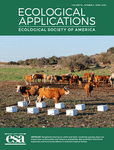
ECOLOGICAL APPLICATIONS
Unveiling the complexities of ecological systems.ECOLOGICAL APPLICATIONS, published by WILEY, is a leading journal in the field of ecology, providing a platform for innovative research that addresses the understanding and management of ecological systems. With an ISSN of 1051-0761 and E-ISSN of 1939-5582, it has established itself as a vital resource for ecologists and environmental scientists since its inception in 1991. Ranked in the top quartile (Q1) for Ecology in 2023 and with a Scopus ranking of 40 out of 461 in Environmental Science, ECOLOGICAL APPLICATIONS boasts an impressive impact factor, attesting to its significance and influence in the field. The journal's mission is to publish peer-reviewed articles that contribute to ecological theory and its applications in conservation and environmental management. Researchers, professionals, and students alike will find invaluable insights and the latest developments in ecological research through its comprehensive scope and rigorous scholarship, ensuring a crucial role in shaping future ecological practices and policies.
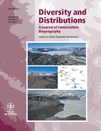
DIVERSITY AND DISTRIBUTIONS
Empowering global discussions on biodiversity and conservation.DIVERSITY AND DISTRIBUTIONS is a leading journal in the field of ecology, evolution, and systematics, published by WILEY. With an impressive impact factor and designated as Q1 in its category for 2023, this journal ranks 49th out of 721 in the Scopus database, placing it in the top 93rd percentile among its peers. The journal has been committed to advancing knowledge since its inception in 1998 and has embraced Open Access since 2019, ensuring that research is accessible to a broad audience globally. By publishing high-quality, peer-reviewed articles that explore biodiversity patterns, conservation strategies, and ecological dynamics, DIVERSITY AND DISTRIBUTIONS plays a crucial role in fostering discussions that help to understand and mitigate global ecological challenges. Located in the United Kingdom, this journal serves a diverse community of researchers, professionals, and students, making significant contributions to science and policy regarding biodiversity and its distributions.

AMPHIBIAN & REPTILE CONSERVATION
Preserving Nature's Wonders Through Innovative ResearchAMPHIBIAN & REPTILE CONSERVATION, published by the Amphibian Conservation Research Center & Lab, is a leading journal dedicated to the field of herpetology and environmental conservation. With an ISSN of 1083-446X and an E-ISSN of 1525-9153, this journal serves as a vital resource for researchers, conservationists, and students interested in the preservation of amphibian and reptile species. The journal has achieved remarkable rankings, categorized in the Q2 quartile for Animal Science and Zoology, Ecology, and Nature and Landscape Conservation as of 2023, reflecting its significant contribution to the scientific community. Over the converged years from 2016 to 2024, the journal has established itself as an integral platform for disseminating research findings, fostering collaboration, and enhancing the understanding of biodiversity and ecosystem dynamics. By embracing an open-access approach, AMPHIBIAN & REPTILE CONSERVATION ensures that critical research is readily available to a global audience, promoting informed conservation efforts and policy advocacy to safeguard these vital species amidst their declining populations.
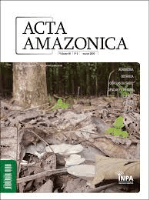
ACTA AMAZONICA
Bridging Science and Sustainability in the Amazon.ACTA AMAZONICA, an esteemed journal published by the Instituto Nacional de Pesquisas da Amazônia, is a pivotal resource in the fields of Agricultural and Biological Sciences, reflecting its stature with a 2023 Q2 category ranking. Since its inception in 1979 and transitioning to Open Access in 2003, this journal has dedicated itself to disseminating significant research related to the Amazon region, contributing to the understanding of its biodiversity, ecology, and sustainability challenges. With an ISSN of 0044-5967 and E-ISSN 1809-4392, ACTA AMAZONICA provides a platform for researchers, professionals, and students to share innovative findings and insights. Based in Manaus, Brazil, it plays a critical role in fostering collaborative research efforts that address environmental and conservation issues pertinent to the Amazonian context. Its commitment to accessibility ensures that valuable research is available to a wide audience, fulfilling its objective of promoting knowledge and encouraging dialogue amongst the global scientific community.

ECOLOGY LETTERS
Unveiling the intricacies of nature through rigorous research.ECOLOGY LETTERS, published by Wiley, is a premier journal dedicated to advancing the field of ecology and related disciplines. Renowned for its rigorous peer-review process and impactful research contributions, the journal boasts an impressive Scopus Rank of #13 out of 721 in the category of Agricultural and Biological Sciences, positioning it in the 98th percentile globally. With a Q1 rating in the 2023 quartile rankings for Ecology, Evolution, Behavior and Systematics, it serves as an essential platform for ecologists and evolutionary biologists to disseminate cutting-edge research findings from 1998 to 2024. Although not an open-access journal, ECOLOGY LETTERS actively contributes to the global ecology discourse, making it a critical resource for researchers, professionals, and students dedicated to understanding complex ecological interactions and evolutionary processes.